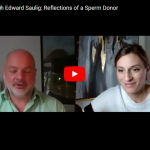It’s human nature to want to explain away truths we’d rather ignore. Every morning millions of people convince themselves that the number on the bathroom scale simply can’t be accurate. No fault divorce prevails as we no longer feel the need to fess up to what went wrong—we conveniently claim ‘irreconcilable differences’. 21st century science is also ignoring truth in order to advance its biotechnology agenda. Unfortunately this agenda can be harmful and degrading to human dignity. Telling the truth, the whole truth, and nothing but the truth about difficult issues can just be too inconvenient.
Take a look at recent debates around the reproductive industry’s use (and abuse) of young women as harvested eggs sell for a premium to wealthy infertile couples and human cloning researchers. Many would rather ignore the truth that women have a limited number of eggs available to start their family. Most people don’t know that in utero, females begin with about 7 million eggs. By the time a baby girl is born, the number of eggs she has drops dramatically to between 1 and 2 million. And by the time this young girl enters puberty, the number of available eggs drops again, down to approximately 300 give or take a 100 or so. That’s some attrition rate!
The college girl who thinks that earning some quick cash selling her eggs may have to deal with an inconvenient truth when she finds herself prematurely infertile. Egg harvesting often removes up to 40 eggs at a time. Add in the fact that it is not uncommon for young women to sell their eggs more than once. It is inconvenient to face the truth that egg donation is apt to destroy a young woman’s future fertility, leaving her with a grossly depleted supply of eggs by the time she has the chance to start a family of her own.
What is the value of one’s fecundity? Is any amount of money adequate to compensate for the grave risks egg donors take? And is it really accurate to characterize this transaction as egg ‘donation’? Although it may be inconvenient to acknowledge, since money changes hands we are really talking about a booming business—not donation. We inconveniently have to talk about supply and demand, and what the market will bear.
And the egg ‘donation’ business is booming! Lots of people are making lots of money brokering eggs. It is easier to talk about out of pocket expenses and lost wages than the value of an egg from a collegiate with a high SAT score and a good genetic heritage. As it relates to research and egg compensation, this discussion has been all too inconvenient because you cannot get good informed consent when money enters the discussion. As soon as money is on the table, informed consent gets coerced, manipulated and bought—often for a hefty price.
Finally, it’s inconvenient to talk about the health risks to young women who subject themselves to very powerful hormones to hyperstimulate their ovaries and then undergo anesthesia and surgery to have their eggs removed via a needle injected through the vaginal wall. Ovarian hyperstimulation syndrome (OHSS) can lead to stroke, organ failure and even death. Reproductive cancers such as ovarian cancer are also looming realities for young women undergoing egg harvesting procedures. It seems these are truths that we would rather not discuss. They might jeopardize the egg trade and cloning research.
It is much more convenient to swear that women have been properly and adequately informed of the risks. It is easier to minimize the risks and reclassify women diagnosed with OHSS. In the Human Reproduction Update Vol. 9, No. 3, 2003, Drs. M.A. Aboulghar and R.T. Mansour of the Egyptian IVF Center in Cairo, present a review of the classifications of OHSS. Since 1967, when Rabau et. al. first outlined the classification of OHSS listing three categories of mild to moderate and then severe OHSS; shifts have taken place. Navot et. al. in 1992 eliminated mild and moderate categories and distinguished two categories under severe OHSS–severe and critical. In 1999, Rizk and Aboulghar eliminated the mild category since mild forms of OHSS occur in most patients after ovarian stimulation.
How convenient.
Most women will suffer at least mild OHSS, so the egg donation business doesn’t document and track these cases. She didn’t get sick enough. Can you imagine any drug or surgical procedure which may cause, say a fever in most people, but because most people experienced fever, we just stop tracking and reporting that? If statistics impede ‘scientific progress’, we just redefine them out of existence. We can convince the public and ourselves that all is well. But when we deny inconvenient truths, real people suffer very real harm.
This article first appeared in tothesource.org
Author Profile
Latest entries
 Sperm DonationMarch 15, 2022Venus Rising with Edward Saulig: Reflections of a Sperm Donor
Sperm DonationMarch 15, 2022Venus Rising with Edward Saulig: Reflections of a Sperm Donor BioethicsMarch 13, 2022Dr. C. Ben Mitchell: 2022 Ramsey Award Winner
BioethicsMarch 13, 2022Dr. C. Ben Mitchell: 2022 Ramsey Award Winner #BigFertilityMarch 10, 2022Documentary Explores One Woman’s Journey through Egg Donation
#BigFertilityMarch 10, 2022Documentary Explores One Woman’s Journey through Egg Donation BioethicsMarch 9, 2022Questioning the “Science” of the Gender Industry
BioethicsMarch 9, 2022Questioning the “Science” of the Gender Industry

